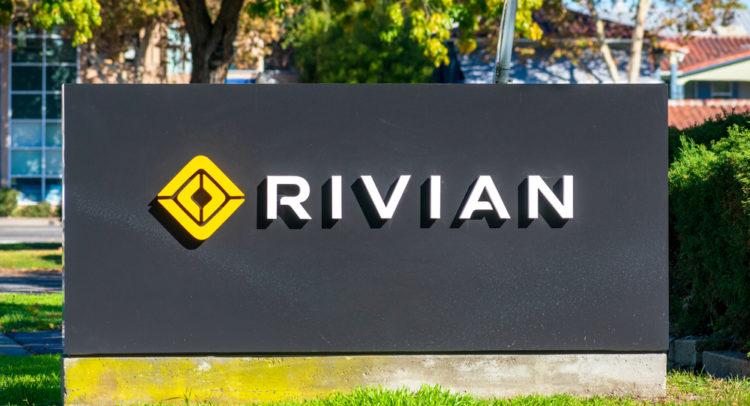Once touted as the next Tesla (TSLA), Rivian Automotive (RIVN) ran out of steam. Its shares have fallen off the cliff since the beginning of 2022, owing to multiple macroeconomic factors and internal issues. It recently delivered a mixed bag in its second quarter, and it seems to have a long way to go towards profitability. It’s best to tread with caution with RIVN stock. Hence we are neutral on RIVN stock.
Stay Ahead of the Market:
- Discover outperforming stocks and invest smarter with Top Smart Score Stocks
- Filter, analyze, and streamline your search for investment opportunities using Tipranks' Stock Screener
Rivian’s investors have been on a rollercoaster run since its IPO. With a massive IPO, the EV pure-play was able to build its cash war chest and switch on the afterburners with its production.
However, production troubles and the resultant low volumes have resulted in massive losses for the company. Though its order backlog remains impressive, the tough supply-chain environment worries us. If it nails its objectives, we could be looking at the next EV juggernaut, but it still has lots to do.
Rivian’s Positive Trait — Impressive Top-Line Growth
Rivian’s stock fell after earnings despite posting $364 million in sales during the second quarter, comfortably beating analyst estimates of $338 million. Moreover, its sales increased by $95 million sequentially, as the enterprise delivered close to 4,470 vehicles in the second quarter, a massive bump from just 1,230 in the first quarter.

Demand shouldn’t be much of a problem, as the company boasted 98,000 pre-orders of its R1 pickup truck. Moreover, it also has 100,000 delivery vans ordered by Amazon (AMZN).
One of the most encouraging aspects of Rivian’s second quarter was that it maintained its 25,000 production forecast. On top of that, it ended with a quarter with close to $15.5 billion in cash, excluding its borrowing capacity. With its robust financial position, the company is confident that it will launch its R2 platform in 2025.
However, it’s been burning cash at a fast pace. It burnt through a whopping $1.6 billion in cash in the second quarter alone. Therefore, there’s no guarantee that the firm won’t run out of capital.
Rivian’s Negative Trait — Huge Net Losses
During the second quarter, Rivian experienced a hefty net loss of $1.7 billion as it continued to ramp up spending to expand its operations. Moreover, its GAAP net loss came in at ~$4.70 for every dollar of sales recorded, so there’s a long and winding road ahead toward profitability.
The rapid growth in operating expenses has been a major problem for Rivian. During the second quarter alone, it lost $1.7 billion, $116 million more than the first quarter. Additionally, future investments and inflationary pressures will continue to pressure the company’s bottom line.
Moreover, its management has cut adjusted EBITDA guidance by a substantial $700 million due to high inflation rates, supply-chain issues, and greater-than-expected expenses. Hence, its adjusted EBITDA is expected to come in at a negative $5.45 billion for 2022.
Furthermore, headwinds from the new climate and energy plan introduced by the U.S. government could be a major cause for concern for RIVN. The prerequisites for a $7,500 tax credit have become more stringent, which should hurt RIVN.
According to the company’s head of customer engagement, “an electric pickup truck or SUV must be priced below $80,000, and the buyer must fall below certain income thresholds to qualify”. In terms of income requirements, an individual income-earner must make less than $150,000. Hence, those interested in purchasing a Rivian car will likely see its tax credit disappear.
Is Rivian Stock Expected to Go Up?
Turning to Wall Street, RIVN stock maintains a Moderate Buy consensus rating. Out of 12 total analyst ratings, there are eight Buys, three Holds, and one Sell rating.
The average RIVN price target is $48.17, implying 26% upside potential. Analyst price targets range from a low of $27 per share to a high of $75 per share.

Conclusion: Rivian Has a Lot to Prove
Rivian was one of the hottest IPOs of the past couple of years, but its stock has shed a ton of value in the past few months. The company faces multiple headwinds in its effort to push forward with its production plans. Moreover, it continues to lose cash at an alarming pace, which will likely result in massive liquidity issues down the line.
On the flip side, its revenue growth is impressive, and its growing order backlog is a testament to the quality of its product. Revenues came in well ahead of analyst estimates in the past few quarters and are likely to perform well in that regard. Moreover, it maintained its production forecast, which shows the depth of its productive capacity.
At this point, the company’s market cap is just a fraction of Tesla’s and has plenty of room to grow. Nevertheless, it faces tough competition from a string of traditional and up-and-coming automakers. Factor in the climate and energy bill downer, and it’s probably best to watch RIVN from the sidelines. It has the potential to become a major player in the EV sphere, but it still has a lot to prove to investors.
















